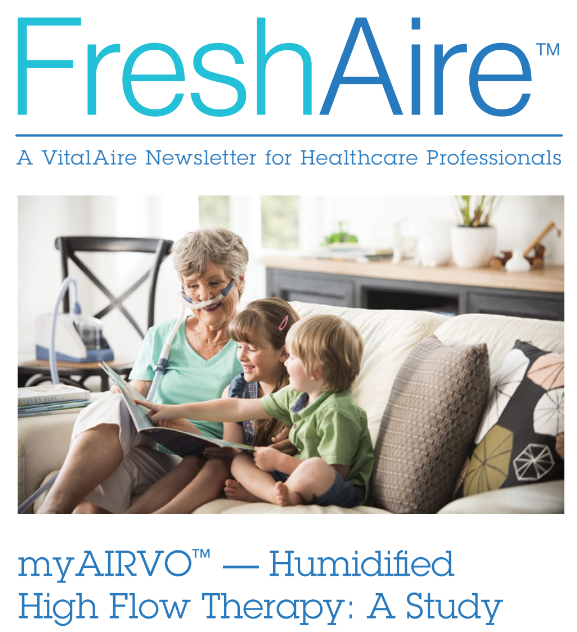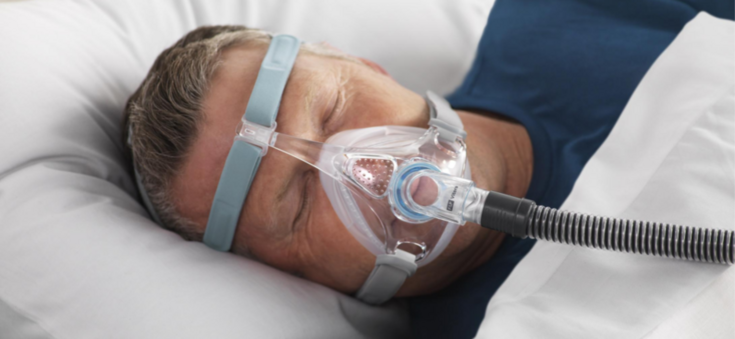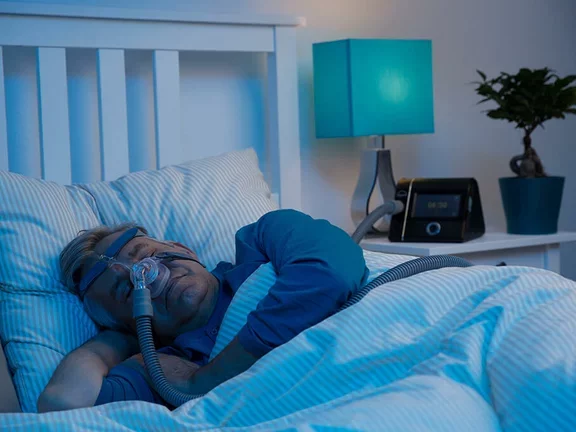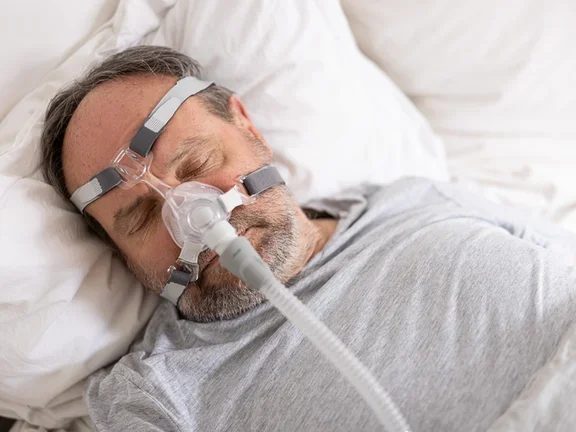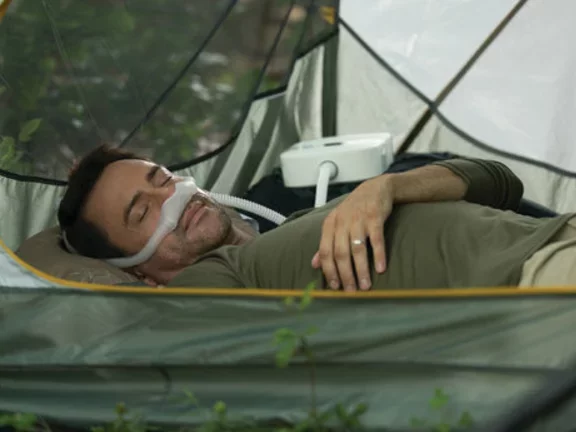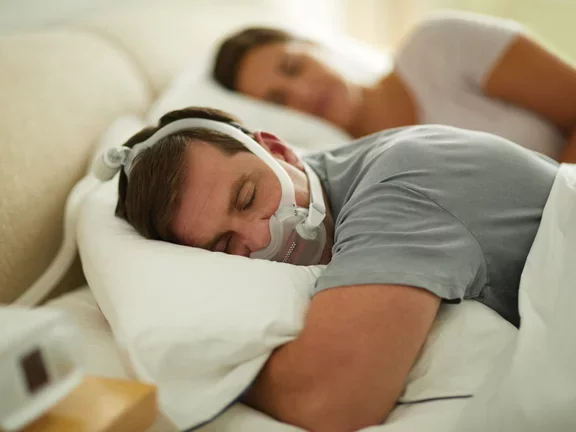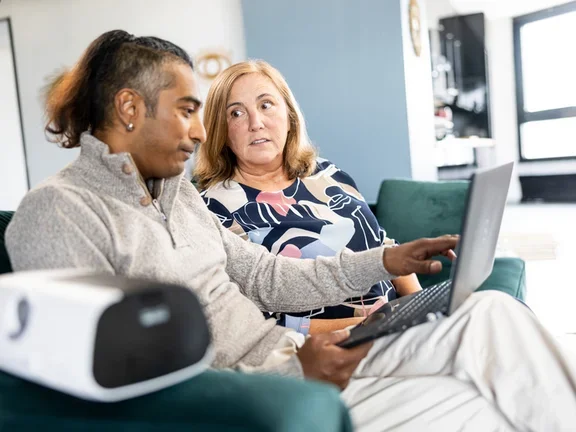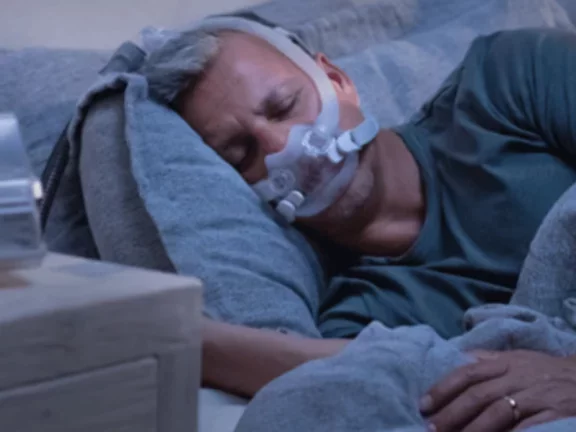FreshAire: The Respiratory Care Newsletter
Know more!
FreshAire: The Respiratory Care Newsletter
-
Download the document PDF (608.7 KB)
Join other healthcare professionals and get the latest in respiratory care news sent right to your inbox twice a year.
Read our Latest Articles: Edition - Fall and Summer 2019
Vaping or JUULing
Vaping is a modern and controversial trend, but it's definitely not new ...Vaping is a modern and controversial trend but it’s definitely not new… As far as in Ancient Egypt, vaping techniques such as using hot stones to vape herbs were already popular. The first waterpipe or shisha was introduced in Medieval India, several centuries ago. The first e-cigarette was invented by an American named Herbert A. Gilbert in 1963. He patented "a smokeless non-tobacco cigarette" that involved "replacing burning tobacco and paper with heated, moist, flavored air". This device produced flavored steam without nicotine. Gilbert's invention was ahead of its time but did not raise interest and was never commercialized because smoking was still fashionable at that time. The Chinese firm Hon Lik made the first modern e-cigarette in the mid-2000s. E-cigarettes work by heating a liquid to produce an aerosol that users inhale into their lungs. The liquid may contain nicotine, tetrahydrocannabinol (THC) and cannabinoid (CBD) oils, along with other substances and additives such as propylene glycol, glycerin, flavors, tiny amounts of toxicants, carcinogens, heavy metals, and metal nanoparticles. Its exact composition varies across and within manufacturers, and depends on the contents of the liquid, the physical and electrical design of the device and the user behavior.
Since their entrance to the market in 2003, global use has risen exponentially. As any other electronic device, e-cigarettes become even smaller, lighter and smarter. Nowadays, the brand Juul has become particularly popular since it's e-cigarette is the smallest on the market. It's large range of flavours and “vape juices” have made it popular amongst teens and young adults. Vaping, juuling, same matter…The terms vaping and juuling are now used interchangeably. At present, scientists do not have enough data and information on the long-term effects of the liquids used in e-cigarettes. Analysis of these liquids and the vapor produced when they’re heated show that e-liquids can react to form irritating chemicals called acetals. Acetals are formed from the combination of alcohol and aldehydes; chemicals used to flavor and perfume foods and other commercial products. While some aldehydes are considered harmful, many are generally recognized as safe to eat and touch. Still, little is known about the effects of aldehydes and acetals when inhaled through an e-cigarette, although some research has demonstrated that the acetals can irritate airways more strongly than the aldehydes from which they were formed. This resulting irritation can prompt an inflammatory response in the respiratory system, particularly in the bronchioles, leading eventually to a disease called bronchiolitis obliterans, which is otherwise known as popcorn lung. Popcorn lung gets its name from a chemical called diacetyl, which was once commonly used to give food products, such as popcorn, a rich, buttery flavor. In fact, the condition was first identified among popcorn factory workers who inhaled the chemical in the workplace. The US FDA considers diacetyl generally safe to eat, but it’s dangerous when inhaled. However, diacetyl is still found in the majority of e-cigarette flavors… Symptoms of popcorn lung are similar to those of COPD. Common symptoms include difficulty breathing and a persistent, progressive and dry cough. Popcorn lung is also known as obliterative bronchiolitis, bronchiolitis obliterans, or constrictive bronchiolitis.
Large tobacco companies have played an active role in sponsored scientific research to positively portray the tobacco industry and lobby against regulation. Leaders in vaping, like JUUL Labs, established in early 2019 the research company JLI Science with the stated goal to “better understand the effects and impact vaping products have in the long term, while also discouraging new users, and to share those results with the scientific community”. Rigorous and independent research is needed to establish acute and long-term risks and benefits of vaping for different populations and provide the evidence base for prevention, control and regulation of vaping devices.
The ultimate goal for research, intervention and policies is to maximise potential public health benefits of vaping, if any, while minimising risks. At the present time it's still very unclear for worldwide Health authorities to take a position on this topic. The Canadian Health authorities are closely monitoring increasing reports in the United States of respiratory illnesses and deaths, potentially linked to vaping. While advertising flavours appealing to youth is prohibited in Canada, some states in the US and some countries such as Brazil, Singapore or India have decided to ban completely the e-cigarette while others focused only on the ban of flavours. The complete ban of e-cigarettes could be counterproductive from a public health standpoint as bans are typically a top-down attempt to force sudden behaviour change and often have the reverse response of triggering avoidance behaviours. It would push people towards the black market with all the associated risks. The other danger in issuing a blanket warning about all e-cigarette use is that it might discourage more smokers from making the switch in an attempt to cease tobacco smoking, which could also have negative public health consequences. There is indeed a balance to be struck when it comes to vaping: it’s not harmless and non-smokers — minors especially — should not take up the habit. However, vaping as a “safer” alternative source of nicotine for smokers who want to quit smoking should also be weighed in the decision making...
References:
https://archive.cdc.gov/#/details?url=https://www.cdc.gov/tobacco/basic_information/e-cigarettes/severe-lung-disease.html
https://www.thelancet.com/journals/lancet/article/PIIS0140-6736(19)31718-0/fulltext#back-bib2
https://www.healthline.com/health/popcorn-lung#x--ray
To go further:
https://www.medscape.com/viewarticle/910667#vp_2
https://www.thelancet.com/journals/lanres/article/PIIS2213-2600(19)30027-X/fulltext
COMET: a multicomponent home-based disease-management program
The COPD Patient Management European Trial (COMET) investigated the efficacy and safety of a home-based COPD disease management program for severe COPD patients. The study was conducted simultaneously in several European countries (France, Spain, Italy, Germany). This COPD management initiative included a self-management program, home telemonitoring, care coordination and medical management. The primary end-point was the number of unplanned all-cause hospitalization days in the intention-to-treat (ITT) population. Secondary end-points included acute care hospitalization days, BODE (body mass index, airflow obstruction, dyspnoea and exercise) index and exacerbations. Safety end-points included adverse events and deaths.
Chronic obstructive pulmonary disease (COPD) is a chronic condition that affects over 10% of adults aged over 40 years. Patients with severe to very severe COPD have worse health status, higher risk of hospitalized exacerbations, higher acute care burdens and higher mortality rates than patients with mild to moderate disease. A better control of exacerbations could slow down the disease progression and reduce hospitalization. COPD impose a heavy daily care burden on patients and their families. Moreover, patients must learn how to cope with their disease, recognise when they need professional care, adopt a healthy lifestyle, and avoid risk factors for exacerbations and hospitalizations. Effective self-management programs have focused on patient education, behaviour modification, patient motivation through coaching by a health professional, and quick access to healthcare when needed.
The aim of the COMET study was to investigate the effectiveness, safety and efficiency of a multicomponent home-based COPD disease management program specifically adapted for patients with severe COPD and which included a standardised self-management program and coaching with a case manager; a home monitoring and care coordination through an e-health platform for early detection of exacerbations; and feedback and quality control to optimize delivery of the interventions. One expected result of COMET was that the use of this multicomponent COPD disease management program would help patients adopt the right behaviours to recognize the signs of an exacerbation, avoid or reduce hospitalizations.
Patients who were eligible to participate were randomly allocated to the disease management group or to the control group however the study was open, patients were not blind regarding the group they belonged to.
The COMET home-based disease management intervention included a self-management program, a home monitoring and an e-health telephone/web platform. The self-management program was based on the “Living Well with COPD” program developed at the Montreal Chest Institute of the McGill University Health Centre, in Montreal. The study was conducted between September 2010 and March 2015. A total of 345 patients participated to the study, 172 in the disease management group and 173 in the control group. A total of 27 patients died during the study, one of which died prior to randomisation. The mortality rate was significantly lower in the disease management group (3 patients) than in the control group (23 patients). This COMET intervention across four European countries did not achieve a statistically significant difference in the number of exacerbations although patients in the disease management group had 23% fewer all-cause hospitalization days than patients in the control group. The results of similar COPD self-management interventions in clinical trials have been inconsistent, which has created ambiguity regarding self-management interventions and has discouraged their implementation in clinical practice.
However, this study showed that the use and adaptation of a self-management program previously demonstrated to be clinically beneficial rather than creating a new program is possible and even encouraged. The COMET disease management program may thus provide a basis for future self-management interventions or for designing studies to evaluate such interventions. Particular attention was given to patient coaching by healthcare professionals (case managers). A strength of the COMET study was the use of an e-health platform for reporting frequent health status updates, rapid intervention when necessary, and oxygen therapy monitoring. Another compelling feature of the COMET initiative is that it was the first study to specifically address a disease management intervention for severe COPD, delivered by case managers, across four countries with different medical practices and healthcare systems.
This international study supports the feasibility of a multicomponent home-based disease management intervention in severe COPD patients (many being on LTOT), and demonstrated that most patients adhered to the intervention. For future studies, it will be crucial to assess right at the beginning the patient needs and self-management skills for subsequent program tailoring. In addition, some very severe patients presenting with severe comorbidities should be clearly identified as they may not be able to fully implement the program and thus benefit from it.
Reference:
https://erj.ersjournals.com/content/51/1/1701612
To go further:
https://www.ncbi.nlm.nih.gov/pmc/articles/PMC6526202/
Ask an Expert
Can you describe your background and role?
I have been a registered Respiratory Therapist for 26 years, practicing in Canada and abroad as I spent three years in Saudi Arabia. I have worked in both hospital and homecare settings in various departments such as ICU, acute care, chronic disease management, ER, high risk labour and delivery, ALS clinic, and transport teams for both adults and children. Throughout my career I’ve taken on many roles including instructor and coordinator for teaching life support courses, Asthma and COPD educator, and precepting respiratory students to enhance their skills and abilities. Later on I involved myself in various committees such as Quality Improvement and Ethics. These varying roles both in Canada and abroad led me to develop an expertise in respiratory care and interest in the transition from hospital to home.
I am currently the Regional Director at Prairie Oxygen and VitalAire for Saskatchewan and Manitoba, but I see myself more as a trouble-shooter communicator! I work every day to serve my patients and protect their voice. My role to my coworkers at Prairie Oxygen and VitalAire is to maximize their capabilities on a daily basis: I want them to grow within our company. I love my job and making people breathe and live better!
What should be the focus of a home respiratory healthcare company?
It’s obviously the customer and the relationship we develop with them. At Prairie Oxygen and VitalAire, we keep in mind that our customers are human beings, and not transactions. We work to establish trust with our patients as well as with our community partners. Homecare involves different professionals taking care of the patients and their needs at home so it is crucial to create best practices with other community healthcare professionals.
What do you do at Prairie Oxygen that sets you apart?
Our customer service - our staff - is our most precious asset at Prairie Oxygen. We value our relationships with our customers. They know that we do not consider them just a number or a transaction. At Prairie Oxygen “you're a person not a patient”. We care to build this trust relationship with them. Because of our human approach, we are a trusted advisor and partner in the community, with respirologists, palliative care and other healthcare professionals involved in homecare services.
As a company, Prairie Oxygen is resilient and can adapt to the ever-changing homecare market. Again, we work to serve our customers as well as the health care professionals. For example, we developed for our OSA patients a program that decreases the amount of time spent travelling back and forth to the physicians before being properly set up with therapy. This program makes the life of our patients as well as healthcare professionals easier. It provides “seamless” access to safe and effective testing and treatment for Sleep Apnea in a timely manner while maintaining best practices.
What do you think of e-monitoring and home-based disease management programs for COPD patients?
I think e-monitoring is fabulous! Saskatchewan has such rural and remote regions where having access to primary healthcare can be a challenge and e-monitoring can solve many issues remotely. With e-monitoring, an integrated and multidisciplinary team can work together for the best results. Specialists in one part of the province, or country, can collaborate with peers to solve complex cases. E-health brings patients closer as well. Support groups with peer to peer coaching are made possible thanks to e-monitoring, particularly here in Saskatoon and Regina. Surprisingly enough, e-health can help create a stronger sense of community among patients. It also helps to fill the gap between hospital care and home as it improves the transition and coordination between these two worlds.
Which trends do you see for OSA treatment? and home oxygen?
Despite the fact that we see more and more patients diagnosed with Obstructive Sleep Apnea, the number of patients diagnosed with mild OSA who receive treatment has dramatically decreased in Saskatchewan due to the change in funding. There is an increasing gap to address the patients needs and awareness regarding OSA. Patient’s comfort is a key trend in treating OSA: manufacturers keep developing smaller and lighter CPAP machines, as well as more comfortable masks. Giving patient’s comfort and overcoming this first resistance towards CPAP treatment leads to the development of new accessories such as oral appliances. However, these oral appliances are not adapted to every patient and it will be crucial for the coming years to develop best practices in the prescription and use of these new devices. Indeed, a respirologist will have to be kept involved in the diagnostic and the use of such devices. Trends with “home testing” to diagnosis sleep apnea is a hot topic as well. The consumer needs to be aware and educate themselves on the companies they are dealing with as well as the devices that they are being tested on to ensure proper diagnosis and treatment. Not all testing out there is the same or meets best practice standards. You need to ensure that a qualified specialist is involved as well as a sleep medicine respirologist. Some provinces that have funding for CPAP equipment many not accept testing and results if not performed as per proper Canadian Thoracic Society Guidelines or provincial funding guidelines. When someone chooses Prairie Oxygen or VitalAire to conduct testing for their sleep apnea or purchase any equipment they do not have to worry as we comply with all regulations including GMP and FDA guidelines and best practices. In addition, our business model also incorporates a National Medical Director; Raymond Gottschalk.
As for Home Oxygen, offering the best comfort for our patients is critical, and at Prairie Oxygen, we work with our patients to provide them the most adapted solution to their needs. However, it should not overcome the real medical needs of patients. We do see more and more people buying portable oxygen concentrators (POC) for their relatives who might benefit from home oxygen. Oxygen is a drug and should be used by prescription only. It is our responsibility, as a homecare provider, to raise awareness about home oxygen, its proper use, benefits and dangers. POCs are not for every person using oxygen. Prairie Oxygen can help with the testing on these units to ensure you are safe and a good candidate to use this portable device. Keep you safe, breathing, and mobile is job number one to better lung health!
The full face mask Vitera by Fisher and Paykel
Fisher and Paykel has launched their new version of full face mask, Vitera, in June 2019 in Canada. The F&P Vitera features unique technologies designed to provide patients with comfort throughout the night; including a gentle seal designed to adapt when moving. The F&P Vitera features the RollFit™ XT seal, new VentiCool™ headgear, and a low-profile stability bar. These features will enhance patient comfort during sleep.
Enhancing their confidence in CPAP therapy which should lead to less mask troubleshooting and increase compliance. The adaptable seal RollFit XT seal has specifically been designed for comfort. It rolls back and forth on the bridge of the nose, allowing patients to move freely as the mask adapts to different sleeping positions. This will significantly help to maintain a comfortable seal and minimize leak. It reduces pressure and soreness on the bridge of the nose. The RollFit XT seal, which covers the nose and mouth, is designed to operate at a range of pressures from low to high. The headgear has been designed to keep patients cool and comfortable. The Vitera headgear features VentiCool technology, a custom-made breathable fabric. VentiCool is designed to allow heat and moisture to escape through the fabric to help keep cool and comfortable during sleep. Vitera features a low-profile stability bar designed to keep the seal in place, minimizing mask leaks and enhancing comfort. Some unique ease-of-use features are:
- The unique forehead clip that keeps forehead straps together for easy disassembly and reassembly while also reducing the chance of headgear tangling.
- The adjustable headgear that features forehead and crown straps to provide with easy and personalized sizing.
- New headgear clips with tactile grips that help patients to easily find and position them on the mask frame
- VisiBlue™ color cues incorporated into key components of the mask help significantly with fitting, disassembly, and reassembly.
- If you know of a patient who may benefit from this new technology, contact VitalAire.
FreshAireTM VitalAire's publication for Healthcare Professionals
to help you stay up-to-date on a variety of respiratory related topics.![]() Please email us at freshaire@vitalaire.ca if you have suggestions on topics you would like highlighted in the next FreshAireTM publication.
Please email us at freshaire@vitalaire.ca if you have suggestions on topics you would like highlighted in the next FreshAireTM publication.
Does The Future of Chronic Disease Management Rely On Connected Devices? 1
In our houses, at work, while commuting…. We’re surrounded by tiny, intelligent devices more and more everyday that capture data about how we live, what we do and where we do it. These devices are connected and share our information in order to anticipate or respond to our needs, to solve our problems and eventually, in the great scheme of things, to save our lives. Indeed, smart devices and technology have been introduced to help tackle some of the most significant challenges health care systems are facing today: reducing the costs and resources utilization and improving patient treatment outcomes. One way to succeed might be to shift patient care from hospital to home. While the availability of oral and subcutaneous medications makes home-administration a reality for many diseases, treatment adherence in a decentralized, uncontrolled setting can be negatively affected by infrequent direct interactions between patients and health care professionals. To ensure the adherence of the patient and to enable an ongoing dialogue with the HCP, a multitude of connected devices with applications have been developed to facilitate the management of chronic conditions such as diabetes, multiple sclerosis, schizophrenia, bipolar and depressive disorders, asthma and COPD.
Random Controlled Studies and prospective studies in asthma patients have been conducted with the SmartInhaler™ which is a platform that includes adherence trackers for patients and HCPs, dosing reminders, and allows insights into medication usage. SmartInhaler™ medication sensors wrap around a patient’s existing dry powder or metered-dose inhaler and automatically send usage data to their smartphone using Bluetooth®. The corresponding app analyzes, stores and monitors inhaler use. SmartInhalers™ were subject to a National Institute of Health & Clinical Excellence (NICE) Health Technology Assessment. While an improved adherence with the SmartInhaler™ technology was found across studies, NICE noted that these available studies were not adequately designed to show whether improved adherence is associated with significantly improved outcomes.
Random Controlled Studies and prospective studies in asthma and COPD patients have been conducted with the Propeller system which includes an electronic inhaler sensor that attaches to an existing third-party inhaler. The sensor monitors the date, time and frequency of medication use and transmits these data back to secure servers through a smartphone app or hub-base station. Location data are collected on medication use among patients who have a smartphone. The sensors regularly transmit data back to the server or sync through the smartphone or hub. The Propeller is comparable to the SmartInhaler™ technology. The conducted studies showed a decrease of use of Short Acting Beta Agonist, a decrease in the rate of rescue medication and an increase in symptom-free days.
These studies show that there is definite initial evidence that these tools could be a cost-effective tool to improve treatment adherence, and ultimately outcomes, outside of a controlled setting for chronic respiratory conditions. Digital homecare is expected to decrease uncertainty around patient adherence, while maintaining patient-centric disease management.
Through real-time collection of patient health data, intelligent devices can help detect adverse events or complications before they occur, allowing physicians to differentiate between pharmacological resistance and improper medication use. This may prevent severe treatment-related events or treatment failure that would otherwise consume costs and resources (including hospitalization). With connected devices, real-time decision-making concerning continuation of treatment (including whether to maintain or alter the dose) or treatment discontinuation might become easier.
To ensure broad acceptance of connected devices, some barriers have to be overcome such as; data privacy, connectivity issues, lack of customization of the applications, lack of motivation of patients, reimbursement models and HCP role and remuneration...
If these challenges can be addressed in a way that is agreeable to all stakeholders, it is not too presumptuous to say that the connected devices should facilitate and improve patient involvement in disease management in a flexible care setting, enable early treatment decisions, and finally complement value-based reimbursement models. Of course, further studies will have to be conducted to confirm their impact on these later outcomes. 1
Adherence To Sleep Apnea Treatment Affects Risk Of Hospital Readmission

ADHERENCE TO SLEEP APNEA TREATMENT AFFECTS RISK OF HOSPITAL READMISSION
A retrospective cohort study at the Long Beach Veterans Affairs hospital in California on patients with OSA and were hospitalized between 2007 January the 1st and 2015 December the 31st has demonstrated a direct correlation between CPAP non-adherence and 30-day readmission rates. Non-adherent patients were three times more likely to be readmitted to the hospital within 30 days for all cause of hospital readmission. The leading cardiovascular causes for readmission in these non-adherent patients were: atrial fibrillation, myocardial ischemia and congestive heart failure, all of which are linked to untreated sleep apnea.
Until this study was conducted, the role of CPAP non-adherence in 30-day readmissions was never really explored. This study carries important implications, as it suggests that CPAP therapy may be an important modifiable target for reducing hospital readmissions.
Out of 2,077 records reviewed, 345 patients were included in the study. To be included in the study, patients had to be diagnosed with OSA (confirmed on polysomnography data on chart review.) and to have CPAP adherence data within 12 months preceding their hospital admission. If there was no CPAP adherence data within the 12 months preceding the hospital admission, the patients were excluded. CPAP adherence is defined as CPAP use for 4 or more hours per night on 70% of nights during a consecutive minimum of 30-day period based on Medicare definition. Out of these 345 patients, 183 were adherent and 162 were non adherent. The adherent group had a total of 215 initial admissions, and the nonadherent group had a total of 268 initial admissions. Patient characteristics were obtained from the electronic inpatient and outpatient data recorded at the hospital. Baseline characteristics included: age on admission, sex, body mass index (BMI), living situation (alone or with others), race, baseline apnea-hypopnea index (AHI), residual AHI, comorbidities at the time of initial admission, and adherence to prescribed medications.
Patients with OSA who were non-adherent had higher 30-day all-cause and cardiovascular-cause readmissions. The cardiovascular-cause readmissions in the nonadherent group were mostly due to atrial fibrillation (29.0%), myocardial ischemia (22.5%) and congestive heart failure (19.3%). These findings are aligned with the facts that atrial fibrillation is known to occur more frequently with increased number of apneic episodes and severity of hypoxemia, and CPAP therapy is associated with improved left ventricular systolic function and decreased atrial fibrillation occurrence. Effective use of CPAP has also been associated with decreased sympathetic activity, improved blood pressure and overall decreased cardiovascular events. Pulmonary-related readmissions were higher in the CPAP nonadherent group, however it did not reach the level of significance. Finally the most common non cardiac and non pulmonary causes of all-cause readmissions in the nonadherent group were urologic (10.7%), infection (8.0%) and psychiatric (5.3%). Although the reasons for these readmissions seem broad and unrelated, there is a growing body of evidence that supports increased urinary tract symptoms, immune dysfunction and psychiatric disorders in OSA.
This study has several limitations that merit discussion: it was performed in a single Veterans Affairs Medical Center, limiting generalizability. However, despite this limitation, the readmission rates in CPAP-adherent population and the Medicare and general VA population are relatively similar. Also as with all retrospective studies, the design limits the ability to prove a causal relationship and there is potential for bias results.
Nearly 30 million adults in the U.S. have obstructive sleep apnea. The high prevalence of OSA, its correlation to multiorgan health and increased healthcare utilization makes it an important clinical and public health disease to target. The gold standard to treating OSA is the use of CPAP machine. Encouraging CPAP adherence with incentives may become a lever for action to reduce hospital resources utilization and readmission rates. 2
Ask an Expert: Long Term PAP Adherence
Interview with Jane BaddeleyWe wanted to hear the perspective of Jane Baddeley, previous co-owner and current managing director of Sleep Disorders Clinics in Southern Ontario, on long term adherence and why is it so special.
Can you describe your background and role? I trained in South Africa as a Registered Nurse and then specialized in mental health nursing after graduating from Mount Royal University in Calgary. After completing a Master of Arts in Organizational Analysis and Behavior, I worked for a consulting firm in Toronto mostly involved in change management projects. I became involved about 20 years ago with the Sleep Disorders Clinics as co-owner and director of the three laboratories in Southern Ontario. I hold the Certificate in Clinical Sleep Health (CCSH) from the BRPT.
Can you define long term PAP adherence in few words/numbers and tell why is it so important?Most of the time, sleep apnea is a lifelong partner and therefore treatment should be anticipated as being for life. This can be overwhelming for patients at the beginning of the therapy. The current definition of PAP adherence is an arbitrary one which is based on funding criteria in the USA. It would definitely be more accurate to get away from the well-accepted statement “4 hours, 5 or more nights per week” and refer to adherence as being when a patient uses CPAP for the whole duration of sleep, has a resolution of symptoms of sleep apnea and an AHI below 5.
Long term adherers are often happy on CPAP and they often talk about their CPAP using the personal pronoun “my” CPAP. Long term adherence relies largely on two components: self-efficacy of the patient (“I know I can do this and it will be good for me”) and an ongoing relationship with a trained healthcare professional. Surprisingly, long term adherers do not tend to have worse symptoms or more severe OSA, they are the people who trust that the diagnosis is accurate and that they are supported in their treatment. There is a real difference between the adherers and non-adherers who sort of dabble with treatment. We also see a subset of patients who are using CPAP almost four hours and close to 5 nights per week after 6 months or more on CPAP. These patients may be struggling with their therapy but they are persevering for some reason – a phone call or a bit of follow up might turn them into long term adherers.
What makes an adherent patient so special? Maybe what makes them special for us is that we are delighted when we see them! They are the ones we like to keep in the waiting room, as they rave about how happy they are on CPAP. But more importantly, especially for the severe OSA patients, we know that the ones who are adherent are breathing normally at night with resolution of symptoms, resolution of apnea and decrease in risks of comorbidities such as heart disease or diabetes. Our job is to keep them adherent for life.
It is also necessary to remember that an HSAT is only testing OSA and not other sleep disorders such as insomnia, parasomnias, movement disturbances in sleep or Restless Legs Syndrome.
Is it possible to determine if a patient who has been sent for testing will be adherent at the early stages of the therapy or even before? If yes, how? For some people it is as simple as asking. We notice that patients who know about CPAP, have friends, coworkers or family on CPAP, are often more enthusiastic about CPAP or at least more willing to try. Patients who suspect that they have sleep apnea are also more open to treatment. I often ask a patient if they suspect that they have apnea before I tell them that they do, so that I can gage how receptive they are. I suppose this is a way of assessing self-efficacy; they believe they have something that needs treating, trust our diagnosis and then are willing to use the therapy we recommend.
The patients who are skeptical off the bat are very hard to convince. They may think that all we do is prescribe CPAP and force it on everyone. This is why it is crucial to educate our patients on the impact of OSA on their health and wellbeing, as well as provide them with an accurate diagnostic test result with a reliable physician interpretation. Another notable fact that we see is if a patient is non-compliant in the first 30 days they are unlikely to be compliant subsequently, so those first 30 days are crucial, with early intervention in the first week if the patient has difficulty. With online monitoring it has made our jobs a lot easier and we are able to step in quickly if we see trouble even after the first couple of nights.
Is it possible to determine if a patient who has been sent for sleep testing, does not have sleep apnea even before the test? If yes, how? The use of good screening tools (STOP BANG, ESS, BERLIN, OSA 50, adjusted neck circumference) can help identify the likelihood of the patients having apnea. However, ruling out OSA with only screening tools or home sleep apnea testing (HSAT) can be problematic, as not all OSA patients are sleepy, not all of them snore. This is why the American Academy of Sleep Medicine recommends to follow up any negative level 3 (HSAT) testing with a level 1 sleep study if the patient is symptomatic.
It is also necessary to remember that an HSAT is only testing OSA and not other sleep disorders such as insomnia, parasomnias, movement disturbances in sleep or Restless Legs Syndrome.
Why is it so important for a referral physician to screen their patient before prescribing a sleep test? If screening was performed by GP or referring physicians, then it would definitely decrease the number of tests done on patients without OSA. There are some good validated screening tools such as the STOP BANG, ESS, BERLIN, or OSA 50, that can help GPs to identify the suitability of the patient for OSA testing. It is also necessary to remember that a L3 test is NOT a screening tool but a diagnostic tool, so doing it on patients who probably don’t have OSA is not valuable for anybody (the sleep clinic, the patient, or the referring doctor).
What is the impact of mis-diagnosing OSA? Diagnosing OSA in a patient who doesn’t have it is one thing, but missing the diagnosis of OSA in a patient who does is more problematic. Home tests tend to underestimate the level of apnea as they cannot identify if a patient is sleeping or not. If the patient is awake for half the night and asleep with an AHI of 50 for the other half, the AHI is “diluted” by 50%. This becomes even more problematic with patients who have moderate OSA (AHIs between 15 and 30), as the results of the home test can be deemed as falsely negative.
The HCP should always question the results of a sleep test if they are not aligned with his/her own expectation regarding the patient. This expectation should be based on screening tools, assessment of symptoms, BMI, and a quick assessment of the airway (Malampatti score and tonsils). If the sleep lab or clinic has used automated scoring and the results do not fit with your assessment of the patient, the HCP should take a look at the raw data to check its accuracy (for HCP with sleep experience) and pay careful attention to the doctor’s interpretation. As for any tests, it is important to question the results if they seem inaccurate which is particularly true for home sleep testing. The home sleep testing should ideally be followed by a morning questionnaire, filled in by patient and bed partner, if applicable, to assess the quality of sleep during the night.
The risk of mis-diagnosing or missing the apnea is that you may leave a patient untreated with all the potential health and quality of life consequences.
Product Update: SimplyGo Mini

PRODUCT UPDATE: SIMPLYGO MINI
Powerful, elegant, durable and lightweight the SimplyGo Mini Portable Oxygen Concentrator sets a new standard for oxygen therapy on the go. As the smallest and lightest Portable Oxygen Concentrator ever developed by Philips Respironics, SimplyGo Mini is built for today’s patients with an attractive and sleek design, an easy-to-remove external battery, an easy-to-read screen and a strong, comfortable carrying case. This new POC is light (5 lbs) and definitely intuitive for the patient to use. It is also compliant with all FAA requirements.
SimplyGo Mini is part of the Right Fit, a complete portfolio of oxygen products and programs developed by Respironics and inspired by patients and built for business. It is designed and rigorously tested to be reliable and durable in real-world environments, undergoing the same testing regimen as its counterpart, the proven SimplyGo POC.
Because patients are looking for more independence and freedom, SimplyGo Mini allows them to be out with their oxygen up to 4.5 hours with a single battery and up to 9 hours with double batteries (at a pulse setting of 2). The SimplyGo Mini can provide pulse dose therapy up to a setting of 5.
If you know of a patient who may benefit from this model of POC, contact VitalAire.
To Go Further
Toward Better Management for Asthma: From Smart Inhalers to Injections to Wearables, Researchers Are Finding New Ways to Improve Asthma Treatment.Yan W. IEEE Pulse. 2018 Jan-Feb;9(1):28-33. doi: 10.1109/MPUL.2017.2772398. PMID: 29373855 https://www.ncbi.nlm.nih.gov/pubmed/29373855
Smart inhalers: will they help to improve asthma care?
The Pharmaceutical Journal, April 2017, Vol 298, No 7900, online | DOI: 10.1211/PJ.2017.20202556 https://www.pharmaceutical-journal.com/news-and-analysis/features/smart-inhalers-will-they-help-to-improve-asthma-care/20202556.article?firstPass=false
The official website of the STOP BANG Questionnaire
http://www.stopbang.ca/osa/screening.php
Evaluation of Clinical Tools to Screen and Assess for Obstructive Sleep Apnea
Charlene Gamaldo, MD1; Luis Buenaver, PhD1; Oleg Chernyshev, MD, PhD2; Stephen Derose, MD, MSHS3; Reena Mehra, MD, MS4; Kimberly Vana, DNP5; Harneet K. Walia, MD4; Vanessa Gonzalez, MPH6; Indira Gurubhagavatula, MD, MPH7,8
1Johns Hopkins University, Baltimore, Maryland; 2Louisiana State University, Shreveport, Louisiana; 3Kaiser Permanente, Pasadena, California; 4Cleveland Clinic, Cleveland, Ohio; 5Arizona State University, Phoenix, Arizona; 6American Academy of Sleep Medicine, Darien, Illinois; 7University of Pennsylvania, Philadelphia, Pennsylvania; 8Corporal Michael Crescenz VA Medical Center, Philadelphia, Pennsylvania http://jcsm.aasm.org/ViewAbstract.aspx?pid=31330
- 1. Connected drug delivery devices to complement drug treatments: potential to facilitate disease management in home setting Beate Bittner, Chantal Schmit Chiesi, Saifuddin Kharawala, Gavneet Kaur, and Johannes Schmidt. https://www.ncbi.nlm.nih.gov/pmc/articles/PMC6419593/
- 2. Nonadherence to CPAP Associated With Increased 30-Day Hospital Readmissions Kimberly K. Truong, MD, MPH; Rossi De Jardin, BS; Nahal Massoudi, BS; Mehrtash Hashemzadeh, MS; Behrouz Jafari, MD
Department of Internal Medicine, University of California Irvine School of Medicine, Irvine, California; Section of Pulmonary, Critical Care, and Sleep Medicine, Veterans Affairs Long Beach Healthcare System, Long Beach, California; Epidemiology and Infection Prevention, University of California, Los Angeles, California. http://jcsm.aasm.org/ViewAbstract.aspx?pid=31182
Interested In Learning More About VitalAire?
Where to find us?
73 results
-
British Columbia -
British Columbia -
British Columbia -
British Columbia -
British Columbia -
Ontario -
New Brunswick -
Ontario -
British Columbia -
Alberta -
Colombie-Britannique -
Ontario -
Newfoundland and Labrador -
Ontario -
Nova Scotia -
Nova Scotia -
Alberta -
New Brunswick -
Quebec -
Nova Scotia -
Ontario -
Ontario -
British Columbia -
Ontario -
Ontario -
British Columbia -
Quebec -
Alberta -
Quebec -
Ontario -
Quebec -
New Brunswick -
Ontario -
New Brunswick -
Quebec -
Quebec -
Quebec -
Nova Scotia -
Ontario -
Ontario -
Ontario -
Ontario -
Ontario -
Ontario -
Quebec -
Ontario -
Saskatchewan -
British Columbia -
Alberta -
Saskatchewan -
British Columbia -
New Brunswick -
Quebec -
Quebec -
Quebec -
Quebec -
Quebec -
Ontario -
British Columbia -
Ontario -
Newfoundland and Labrador -
Newfoundland and Labrador -
Newfoundland and Labrador -
Quebec -
Prince Edward Island -
Ontario -
British Columbia -
Nova Scotia -
Ontario -
Ontario -
British Columbia -
British Columbia -
Ontario
-
People at the Center
Our patients are at the centre of everything we do. Positive health outcomes is our goal. -
Quality & Safety
The health and safety of our patients is priority. All of our devices are Health Canada approved. -
Integrity
We hold ourselves to the highest standards. Integrity is at the core of everything we do.
-
Knowledgeable
Our licensed clinical therapists are experts in oxygen therapy and sleep apnea testing and treatment. -
Supportive
Our dedicated team will work with you to ensure that your therapy meets your health and lifestyle needs. -
Individualized approach
We will create a personalized care plan tailored to your needs and health status.

